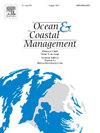象拔蚌渔业多参照点管理措施
IF 4.8
2区 环境科学与生态学
Q1 OCEANOGRAPHY
引用次数: 0
摘要
象拔蚌(Panopea spp.)作为一种渔业资源,易受过度捕捞的影响,其主要原因是空间序列耗竭。对于墨西哥象蚌P. globosa来说,实现其可持续性面临着几个严峻的挑战,主要是因为目前的法律指导方针没有确定该种群丰度的减少,决策者也没有采取行动。本研究评估了在预防策略设计中假设不确定性的控制规则,因此一个新的多步骤过程可以改善墨西哥象蚌渔业的法律指导方针。基于年龄结构种群衰减模型,定义了4个生物参考点:1)管理阈值点,2)目标参考点,3)极限参考点,4)枯竭参考点。由于有效管理象拔蚌渔业和恢复象拔蚌种群之间存在差异,每个参考点与不同的管理策略和行动相关联。这一分析的基本原理是制定一项新的渔业管理建议,并为墨西哥象拔蚌渔业提供最新的指导方针。所有这些都是根据联合国粮农组织通过《负责任渔业行为守则》、《渔业管理参考点》和适应性管理框架建议的国际准则。结果表明,需要改变象拔蚌渔业的法律准则范式。在这种情况下,渔业当局(利益相关者)可以使用这里提出的参考点作为渔业管理的一般方案。否则,如果不采取多重参考点方法和相关的管理行动,西北墨西哥太平洋的渔业社区将面临潜在的经济和社会效益损失的高风险。本文章由计算机程序翻译,如有差异,请以英文原文为准。
Management actions associated with multiple reference points approach for geoduck clam fishery
As a fishery resource, the geoduck clam (Panopea spp.) is susceptible to overharvesting, mainly because of spatial serial depletion. For the Mexican geoduck clam P. globosa, there are several serious challenges to achieving its sustainability, mostly because the current legal guidelines have not identified the decrease in the stock's abundance, and the decision-makers have omitted to take action. This study evaluates control rules assuming uncertainty in the design of a precautionary strategy, so that a novel multistep process can improve the Mexican legal guidelines for the geoduck clam fishery. Based on an age-structured population decay model, four biological reference points were defined as i) management threshold point, ii) target reference point, iii) limit reference point, and iv) depleted. Each reference point (RP) was associated with different management tactics and actions because there are differences between effectively managing a geoduck clam fishery and recovering a geoduck clam population. The rationale for this analysis was to develop a novel fishery management proposal and provide updated guidelines for the Mexican geoduck clam fishery. All of them were based on international guidelines recommended by the ONU-FAO through the Code of Conduct for Responsible Fisheries, the Reference Points for Fisheries Management, and the adaptive management framework. The results showed the need to change the paradigm of legal guidelines for the geoduck clam fishery. In this situation, the fishing authorities (stakeholders) could use the reference points proposed here as a general scheme for Fisheries Management. Otherwise, if the multiple reference point approach and associated management actions are not adopted, fishing communities in the Northwest Mexican Pacific are at high risk of potential loss of economic and social benefits.
求助全文
通过发布文献求助,成功后即可免费获取论文全文。
去求助
来源期刊

Ocean & Coastal Management
环境科学-海洋学
CiteScore
8.50
自引率
15.20%
发文量
321
审稿时长
60 days
期刊介绍:
Ocean & Coastal Management is the leading international journal dedicated to the study of all aspects of ocean and coastal management from the global to local levels.
We publish rigorously peer-reviewed manuscripts from all disciplines, and inter-/trans-disciplinary and co-designed research, but all submissions must make clear the relevance to management and/or governance issues relevant to the sustainable development and conservation of oceans and coasts.
Comparative studies (from sub-national to trans-national cases, and other management / policy arenas) are encouraged, as are studies that critically assess current management practices and governance approaches. Submissions involving robust analysis, development of theory, and improvement of management practice are especially welcome.
 求助内容:
求助内容: 应助结果提醒方式:
应助结果提醒方式:


